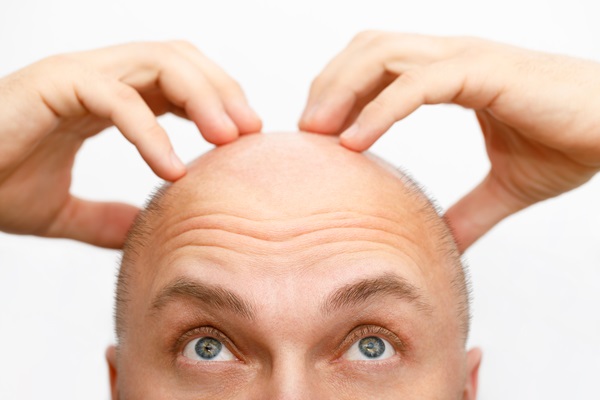Professional Hair Loss Treatment Options

Anyone who has lost their hair can benefit from hair loss treatment. Hair loss is one of those things many people deal with at some point in their lives. It can be caused by various things like the aging process, medical conditions, hormonal changes, or genetics.
Men are more likely to deal with hair loss (alopecia), but it also affects women. Hair loss is not always a cause for concern. The average person loses around 50 to 100 strands daily, but new hairs are constantly replacing these lost strands.
Baldness refers to excessive hair loss in the scalp. A person’s genetics and the aging process are the most common causes of baldness. Some people are unbothered by their baldness and allow it to go untreated and uncovered, while others opt to cover it up with different hairstyles, hats, or wigs.
Popular hair loss treatment options
Hair loss treatment options help to regrow lost hair. These treatments are typically more effective when started early on before significant hair is lost. However, these treatments can provide benefits regardless of how much hair has been lost.
Hair loss treatments typically start with the hair doctor examining patients to determine the cause and type of hair loss they are experiencing. Some of the common signs a person is going bald include:
- Hair receding from the hairline for men and the part line for women
- Gradual thinning on top of the head. This is the most prevalent type of hair loss that affects people as they grow older. For men, the recession typically starts at the hairline, while it often starts as a widening of the part line for women
- Patchy or circular bald areas. This can be the result of hair being stressed. These patches can also appear in other areas like the beard or eyebrows
- Loosening hair. Hair often loosens due to emotional or physical shock, making them more likely to fall out. For example, a handful of loose hair might come out while combing hair. This type of hair loss often makes hair thinner
- Full-body hair loss. Some health issues or treatments like chemotherapy can lead to hair loss all over the body. In such cases, the hair typically grows back
- Patches of skin spread all over the scalp. This is often a sign of ringworm, which leads to swelling, itching, and hair loss
Causes
Hair loss can be caused by various factors, like a person’s family history. People with parents who have male or female pattern baldness are more likely to go bald. Hormonal changes and certain medications can also promote hair loss.
Treatments like radiation therapy can lead to hair loss as well. In some cases, the person’s hair never grows back like it once was. Stress is another factor that can lead to hair loss. This type of hair loss is usually temporary. Hairstyles that put pressure on hair roots cause hair loss in adults.
Treatment options
Hair loss treatment options help to slow down hair loss or reverse it. Some types of hair loss, like patches developing, often reverse without any treatment within a year. Some of the treatments a hair loss doctor might recommend to help with hair regrowth include:
Medication
If a medical condition is causing a patient’s hair loss, a hair doctor might prescribe medication to treat the condition. This typically addresses any hair loss being caused by it. Medications can also be used to treat baldness due to genetics.
Some of the drugs that might be recommended for patients with hair loss include:
- Minoxidil: This drug is available over the counter, and it is an effective way to combat male or female pattern baldness. It is available in liquid, foam, and shampoo form. It can take up to six months to get the full benefits of hair loss treatment with minoxidil. It slows down hair loss and promotes the regrowth of new hair. Potential side effects include scalp irritation and hair growing in unwanted areas like the forehead
- Finasteride: This is usually prescribed for men, but it can also help women with hair loss. It is typically administered in the form of pills patients take orally. It takes a few months to get the full effects of treatment with finasteride. The treatment is not as effective on men over the age of 60
Hair transplant
Hair transplants aim to make the most of the hair patients still have left. It typically involves extracting hair from healthy areas of the scalp and transporting it to bald areas. It can also include taking strips of skin with hair groupings and grafting them to areas that need hair restoration.
You can still have a full head of hair
Our hair doctor can help with various types of hair loss. Give us a call or stop by our Schaumburg clinic to set up an appointment.
Request an appointment here: http://dillonhair.com or call Dillon Hair Restoration at (800) 518-9307 for an appointment in our Schaumburg office.
Check out what others are saying about our services on Yelp: Hair Loss Treatment in Schaumburg, IL.
Recent Posts
Hair loss can usher in mixed emotions and damper your self-esteem, whether or not you were expecting the day. Fortunately, hair plugs or grafts can provide patients with a full head of their natural hair. If thinning or balding is something you are experiencing right now, help is available at our Schaumburg office. First, review…
Hair thinning treatments are far more versatile than they get credit for. Our team works closely with each patient to determine the root cause of their thinning tresses and craft an effective treatment plan. Take a closer look at common causes of hair thinning and the various methods we can use to treat it.Many factors…
Hair loss can significantly impact people, affecting their self-confidence and interpersonal relationships. Fortunately, hair grafting, also known as hair transplantation, provides a viable option to restore the natural hairline. If you are still deciding whether to pursue a hair graft, here are three reasons to consider it.Unlike temporary solutions like wigs or hairpieces, a hair…
For those with wrinkled skin, Botox® injections can provide great relief. While it may be a natural sign of aging, the presence of wrinkles can be frustrating to some. Thanks to the scientific research and testing in the 1990s by several dermatologists, Botox® was approved in 2002 by the Food and Drug Administration for cosmetic…


